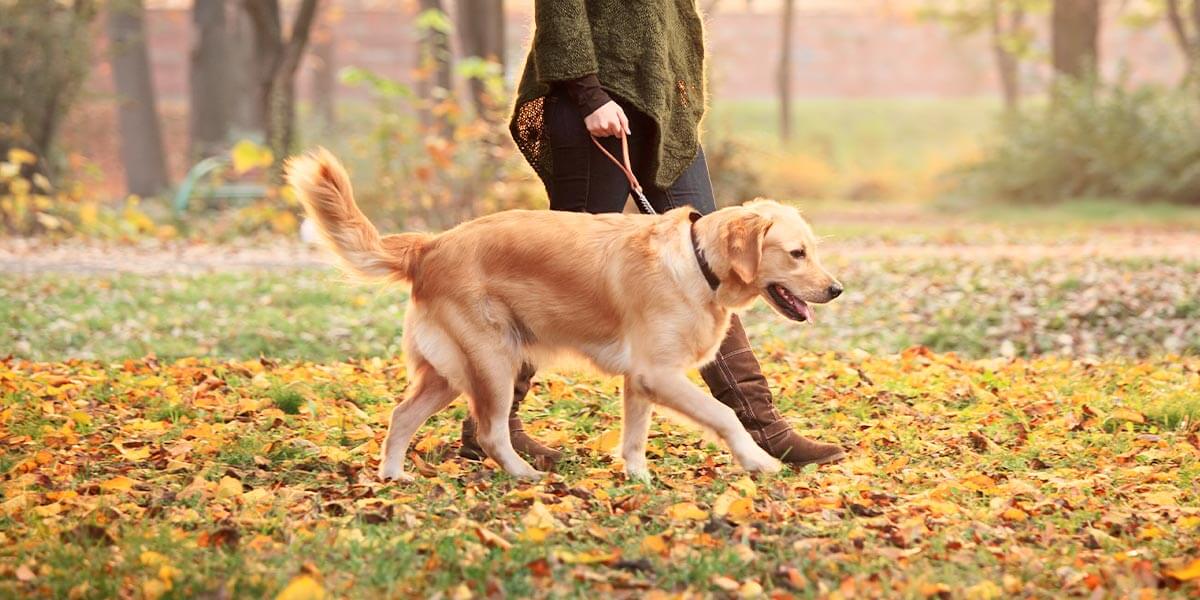If you buy a dog, you usually look forward to long walks with your new friend. But the new dog owner cannot just stroll for hours with a puppy. A young dog has different needs than a fully-grown four-legged friend. But how often and for how long are puppies allowed to go for a walk?
The Essentials in Brief

- Puppies are only allowed to walk in moderation;
- Joints, ligaments, and tendons are not yet stable enough;
- Too much exercise in puppies permanently damages the musculoskeletal system;
- A dog is not considered fully grown until an average of around 1.5 years.
Teach the Puppy to Walk
When the puppy arrives at their new home, they are usually around eight weeks old. At this point, the musculoskeletal system is not as stable as that of an adult dog. Joints, bones, tendons, and ligaments have not yet fully developed. They are still soft, short, and are still growing.
Excessive physical exertion damages the growth process.
In fact, excessive exercise can cause irreparable damage in puppies. This applies not only, but especially, to large breeds, which are comparatively heavy even when they are puppies.
Not just going for too many walks hurts
Going for a walk alone is not one of the only activities that can only be recommended to a limited extent. Other activities such as climbing stairs, romping around in the garden or running should also be enjoyed with extreme caution. Dog sports like agility are of course absolutely taboo. The young dog should only learn about this type of movement at the age of 1.5 years.
What Do I Need to Consider?
It is true that care must be taken not to overload the young musculoskeletal system. But it should still be required. This is the only way to make the small dog’s body strong and vigorous. Come to meet your dog: An optimal mixture of stress and relaxation is to be aimed for. This ensures the optimal development of the puppy.
How often and how long to take the puppy for a walk?
A rule of thumb helps to find the right amount of exercise for the small dog. This is an easy way to find out how often you should go out with your puppy.
In puppyhood, it is advisable to let the dog out for about five minutes per month of life and walk.
A three-month-old dog should take around a quarter of an hour – three times five minutes – to walk. Two rounds a day are just as fine as three. However, more is not recommended.
The rule of thumb is a guideline
Important: The time is only an approximate value. In principle, large breeds should walk a little less, small breeds a little more. In addition, this guideline is about the number of minutes actually passed. You can of course also drive your four-legged friend to the field. There you will then take a fifteen-minute walk for walk. In total, the dog is then on the move for more than a quarter of an hour but is still exactly within the recommended range.
Up to What Age Do These Restrictions Apply?
How long a dog is considered a puppy or young dog depends on the breed. For example, large breeds mature faster than small ones. On average, dogs are fully grown between 1 and 1.5 years of age. Until then, use the months of life as a guide for the walk. So an eight-month-old puppy takes around 40 minutes per walk. Do not begin more intense activities such as cycling or jogging until the animal is fully grown.
Our Recommendation: Educational Games as an Activity for Puppies and Young Dogs
Going for a walk is a great shared activity for man and dog, but games together also weld together and intensify the bond. You can teach your four-legged friend the first commands as early as a few weeks. Communication between humans and dogs can also be ideally trained at this age. Whether to learn to sit and sit down, to take care of your master, or to keep quiet phases: Sprinkle in small exercises over and over again in everyday life. Then the little one is busy – and the muscles are not overloaded.
